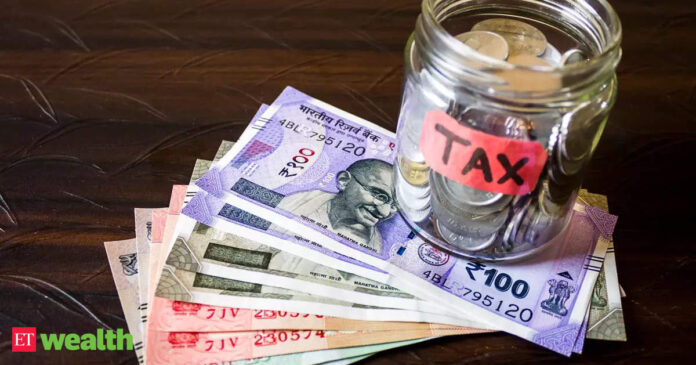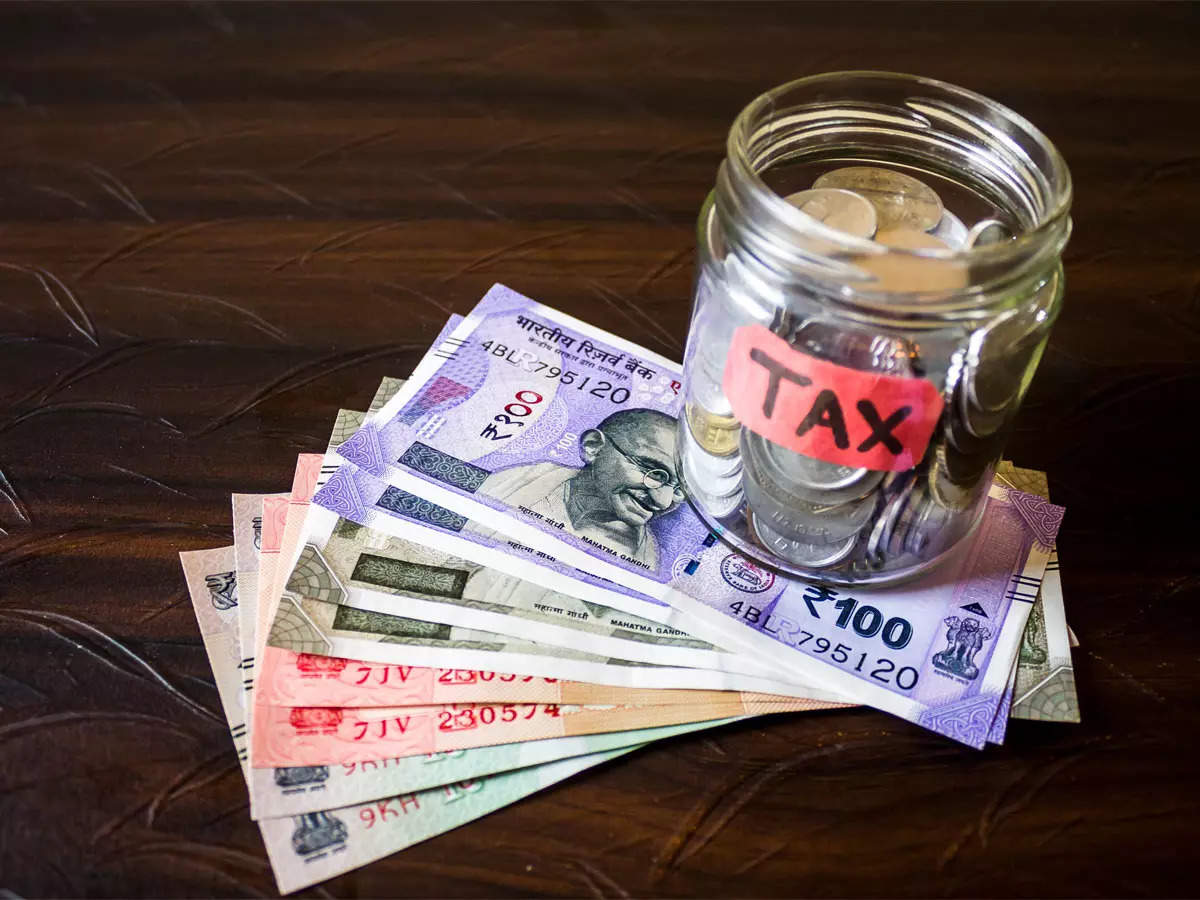Up to Rs 3 lakh – 0%
Rs 3 lakh to Rs 7 lakh – 5%
Rs 7 lakh to Rs 10 lakh – 10%
Rs 10 to Rs 12 lakh – 15%
Rs 12 to Rs 15 lakh – 20%
Above Rs 15 lakh – 30%
These changes will become law once the budget is passed by Parliament and receives Presidential assent.
Current new tax regime features
The new tax regime is currently the default tax regime. This means that an individual’s tax liability will be calculated on the basis of the new tax regime unless the taxpayer specifically opts for the old tax regime. To pay tax under the old tax regime, an individual has to specifically opt for it or choose it. The old tax regime offers multiple deductions and exemptions whereas the new tax regime offers very few.Currently, the new tax regime offers the following to the taxpayer who continue with it:
a) Five income tax slabs. The highest tax rate of 30% is applicable on income exceeding Rs 15 lakh
b) Basic exemption limit is Rs 3 lakh. No tax is payable on income up to Rs 3 lakh.
c) Zero tax payable for incomes not exceeding Rs 7 lakh. This is due to tax rebate of up to Rs 25,000 under Section 87A of the Income-tax Act, 1961
d) Standard deduction of Rs 50,000 is available to the salaried and pensioners. Even family pensioners are eligible to claim standard deduction of Rs 15,000.
e) Surcharge on incomes above Rs 5 crore is 25%
f) Marginal tax relief for small taxpayers whose incomes exceed Rs 7 lakh by a small amount.
Current income tax slabs under new tax regime for FY 2024-25
Here are the current income tax slabs in the new tax regime (Effective April 1, 2024):
| Income tax slabs (In Rs) | Income tax rate (%) |
| Up to 3,00,000 | 0 |
| 3,00,001-6,00,000 | 5% |
| 6,00,001-9,00,000 | 10% |
| 9,00,001-12,00,000 | 15% |
| 12,00,001-15,00,000 | 20% |
| 15,00,001 and above | 30% |
Cess will be levied at 4% on income tax amount. Surcharges will be levied on incomes above Rs 50 lakh.
When was new tax regime introduced?
The new tax regime became effective from FY 2020-21 (from April 1, 2020). At the time of the announcement, the new tax regime was optional. A taxpayer was required to specifically opt for it.
Now that the new tax regime has become the default option from April 1, 2023, an individual has to specifically opt for the old tax regime to claim tax exemptions and deductions under the latter.
How to choose between new and old tax regime
A salaried individual (not having any business income) is required to choose between the two tax regimes every financial year. The choice has to be exercised at the time of filing income tax return. This year, while filing ITR for FY 2023-24 (AY 2024-25), an individual has to select “No for opting under Section 115BAC (new tax regime)” to pay income tax under the old tax regime.
However, taxpayers having business income cannot choose between the two regimes every year. Those who want to continue with the old tax regime have to fill Form 10-IEA. However, they have a once in a lifetime opportunity to switch to the new tax regime. Once they choose the new tax regime, they cannot switch back to the old tax regime.
rewrite this title New income tax slabs announced in new tax regime in Budget 2024
rewrite this content and keep HTML tags
Up to Rs 3 lakh – 0%
Rs 3 lakh to Rs 7 lakh – 5%
Rs 7 lakh to Rs 10 lakh – 10%
Rs 10 to Rs 12 lakh – 15%
Rs 12 to Rs 15 lakh – 20%
Above Rs 15 lakh – 30%
These changes will become law once the budget is passed by Parliament and receives Presidential assent.
Current new tax regime features
The new tax regime is currently the default tax regime. This means that an individual’s tax liability will be calculated on the basis of the new tax regime unless the taxpayer specifically opts for the old tax regime. To pay tax under the old tax regime, an individual has to specifically opt for it or choose it. The old tax regime offers multiple deductions and exemptions whereas the new tax regime offers very few.Currently, the new tax regime offers the following to the taxpayer who continue with it:
a) Five income tax slabs. The highest tax rate of 30% is applicable on income exceeding Rs 15 lakh
b) Basic exemption limit is Rs 3 lakh. No tax is payable on income up to Rs 3 lakh.
c) Zero tax payable for incomes not exceeding Rs 7 lakh. This is due to tax rebate of up to Rs 25,000 under Section 87A of the Income-tax Act, 1961
d) Standard deduction of Rs 50,000 is available to the salaried and pensioners. Even family pensioners are eligible to claim standard deduction of Rs 15,000.
e) Surcharge on incomes above Rs 5 crore is 25%
f) Marginal tax relief for small taxpayers whose incomes exceed Rs 7 lakh by a small amount.
Current income tax slabs under new tax regime for FY 2024-25
Here are the current income tax slabs in the new tax regime (Effective April 1, 2024):
| Income tax slabs (In Rs) | Income tax rate (%) |
| Up to 3,00,000 | 0 |
| 3,00,001-6,00,000 | 5% |
| 6,00,001-9,00,000 | 10% |
| 9,00,001-12,00,000 | 15% |
| 12,00,001-15,00,000 | 20% |
| 15,00,001 and above | 30% |
Cess will be levied at 4% on income tax amount. Surcharges will be levied on incomes above Rs 50 lakh.
When was new tax regime introduced?
The new tax regime became effective from FY 2020-21 (from April 1, 2020). At the time of the announcement, the new tax regime was optional. A taxpayer was required to specifically opt for it.
Now that the new tax regime has become the default option from April 1, 2023, an individual has to specifically opt for the old tax regime to claim tax exemptions and deductions under the latter.
How to choose between new and old tax regime
A salaried individual (not having any business income) is required to choose between the two tax regimes every financial year. The choice has to be exercised at the time of filing income tax return. This year, while filing ITR for FY 2023-24 (AY 2024-25), an individual has to select “No for opting under Section 115BAC (new tax regime)” to pay income tax under the old tax regime.
However, taxpayers having business income cannot choose between the two regimes every year. Those who want to continue with the old tax regime have to fill Form 10-IEA. However, they have a once in a lifetime opportunity to switch to the new tax regime. Once they choose the new tax regime, they cannot switch back to the old tax regime.

